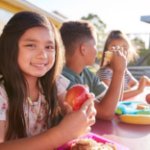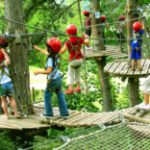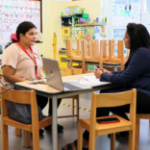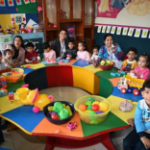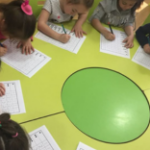
Introducing young children to science can spark a lifelong interest in the wonders of the world around them. Kindergarten is the perfect time to engage little scientists with easy and exciting experiments that not only entertain but also educate. These hands-on activities can help children develop curiosity, critical thinking skills, and a basic understanding of scientific concepts. Here are some fun and simple science experiments that are perfect for kindergarten classrooms or at home.
1. Rainbow in a Jar
Materials:
- A clear jar
- Honey
- Dish soap
- Water
- Olive oil
- Food coloring
Instructions:
1. Pour HHHoney into the jar, filling it about one inch.
2. Add a few drops of food coloring to the honey for effect.
3. Slowly pour dish soap over the honey. Watch as it forms a separate layer.
4. Mix water with a different color of food coloring, then carefully pour it over the dish soap.
5. Lastly, add a layer of olive oil.
Explanation:
Each liquid has a different density, which causes them to form separate layers and not mix together. This creates a colorful, layered rainbow effect that fascinates young learners and introduces them to the concept of density.
2. Magic Milk
Materials:
- A shallow dish
- Milk
- Food coloring
- Dish soap
- Cotton swabs
Instructions:
1. Pour milk into the dish until it covers the bottom.
2. Add drops of different food coloring around the milk.
3. Dip a cotton swab in dish soap and then touch it to the milk.
Explanation:
The dish soap reduces the surface tension of the milk, causing the colors to swirl and mix in mesmerizing patterns. This experiment helps kids learn about surface tension and chemical reactions.
Image:
3. Baking Soda and Vinegar Volcano
Materials:
- Baking soda
- Vinegar
- A small container (like a plastic cup)
- Red food coloring (optional)
- Dish soap (optional)
- A tray to catch the mess
Instructions:
1. Place the container on the tray.
2. Fill the container with baking soda.
3. Add a few drops of red food coloring to the vinegar if you want a lava effect.
4. Pour vinegar into the container and watch the eruption.
Explanation:
The reaction between baking soda (a base) and vinegar (an acid) creates carbon dioxide gas, causing a fizzy eruption. This simple experiment illustrates basic chemical reactions and the concept of acids and bases.
Image:
4. Static Electricity Butterflies
Materials:
- Tissue paper
- Scissors
- A balloon
- A piece of wool fabric
Instructions:
1. Cut butterfly shapes out of tissue paper.
2. Inflate the balloon and tie it.
3. Rub the balloon on the wool fabric to create static electricity.
4. Hold the balloon close to the tissue paper butterflies and watch them “fly” up to the balloon.
Explanation:
Rubbing the balloon on the fabric transfers electrons to the balloon, giving it a negative charge. The tissue paper butterflies are attracted to the balloon because of the static electricity, demonstrating the principles of static electricity and attraction.
Image:
5. Walking Water
Materials:
- Three clear cups
- Water
- Food coloring
- Paper towels
Instructions:
1. Fill two of the cups with water and add a few drops of food coloring to each (use different colors).
2. Place the empty cup between the two colored water cups.
3. Fold two paper towels into strips and dip one end into each of the colored water cups, placing the other end into the empty cup.
4. Watch as the colored water travels up the paper towels and into the empty cup, mixing to create a new color.
Explanation:
This experiment demonstrates capillary action, where water travels up the paper towel fibers. It’s a simple way to show how plants absorb water through their roots and stems.
Image
Summary
Introducing young children to science through hands-on experiments can spark curiosity and a love for learning. Simple activities like creating rainbows in jars, magic milk, baking soda volcanoes, static electricity butterflies, walking water, and balloon rockets can make science both fun and educational for kindergarteners. The best kindergarten school Tiny Tots, located in Pimpri-Chinchwad, Pune, offers a fantastic environment where such engaging activities are part of the curriculum, ensuring a strong foundation for young learners.
